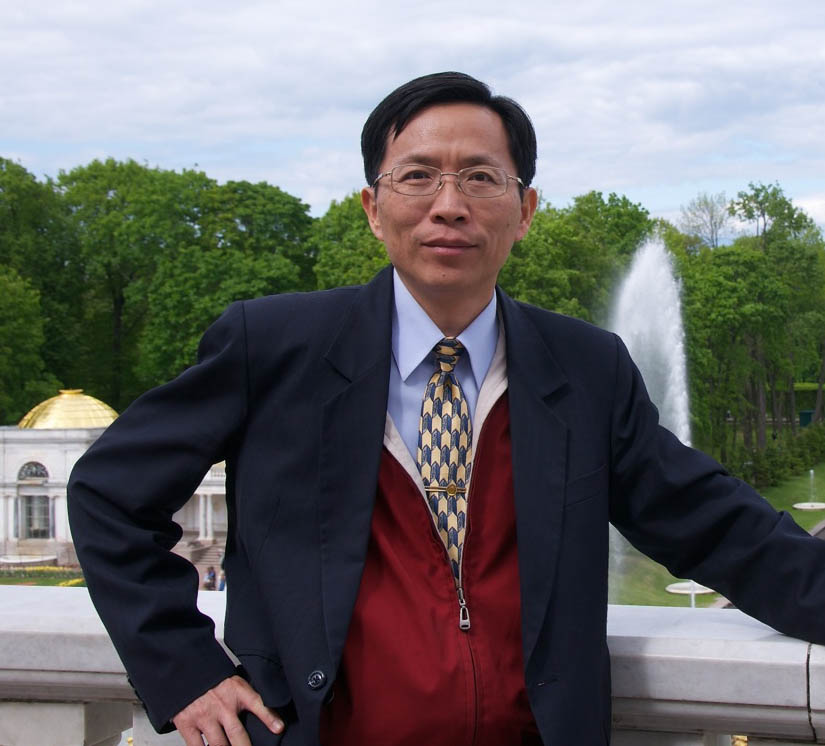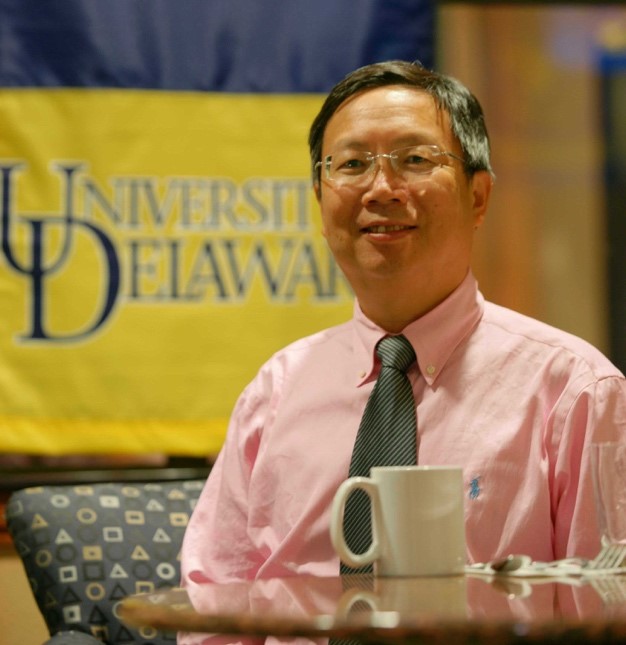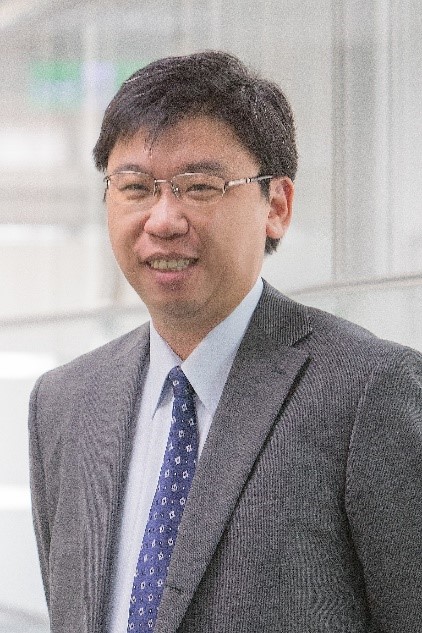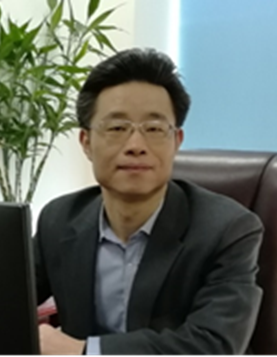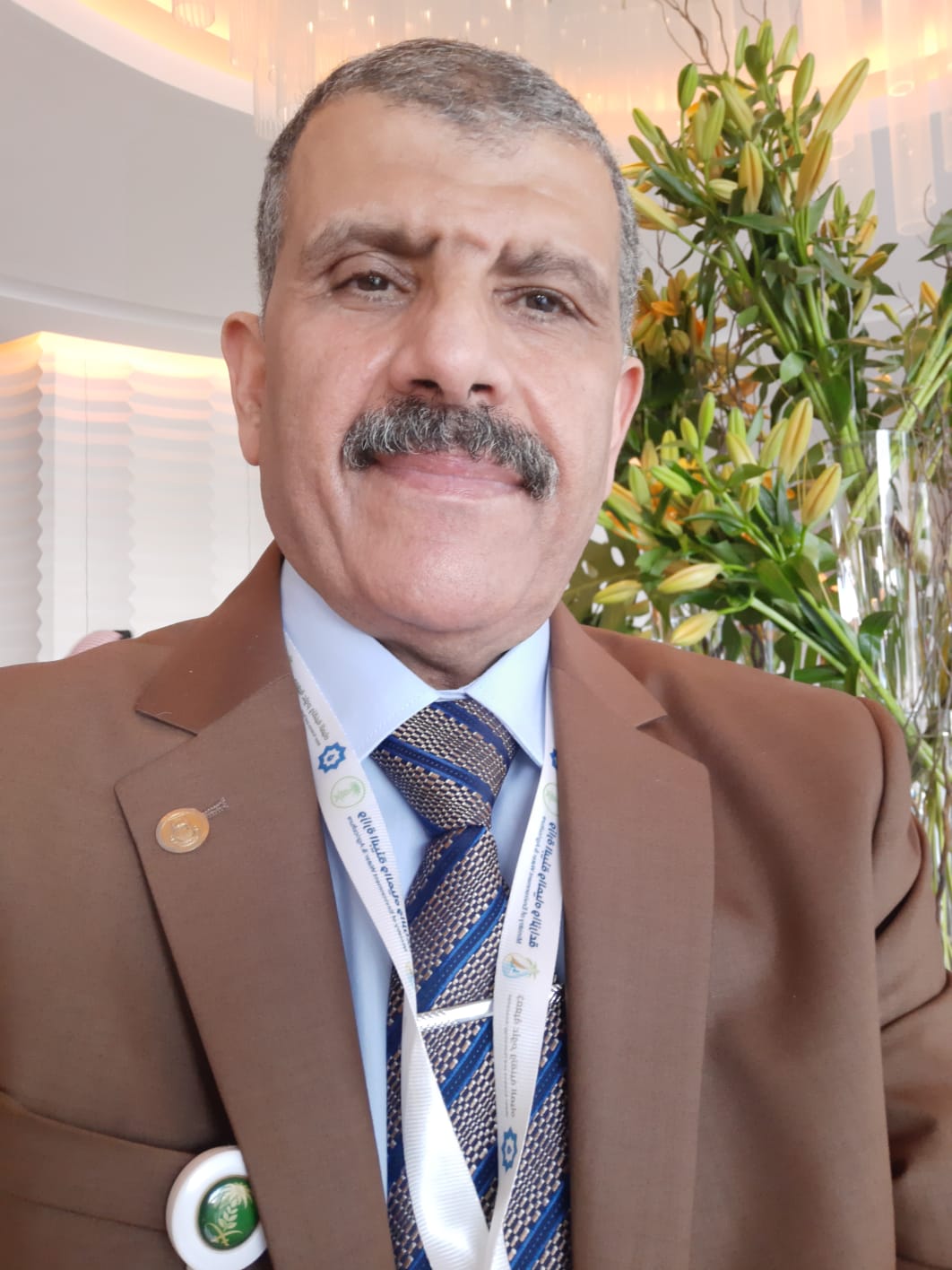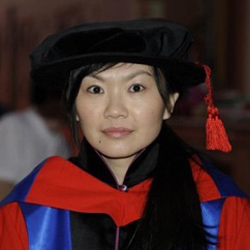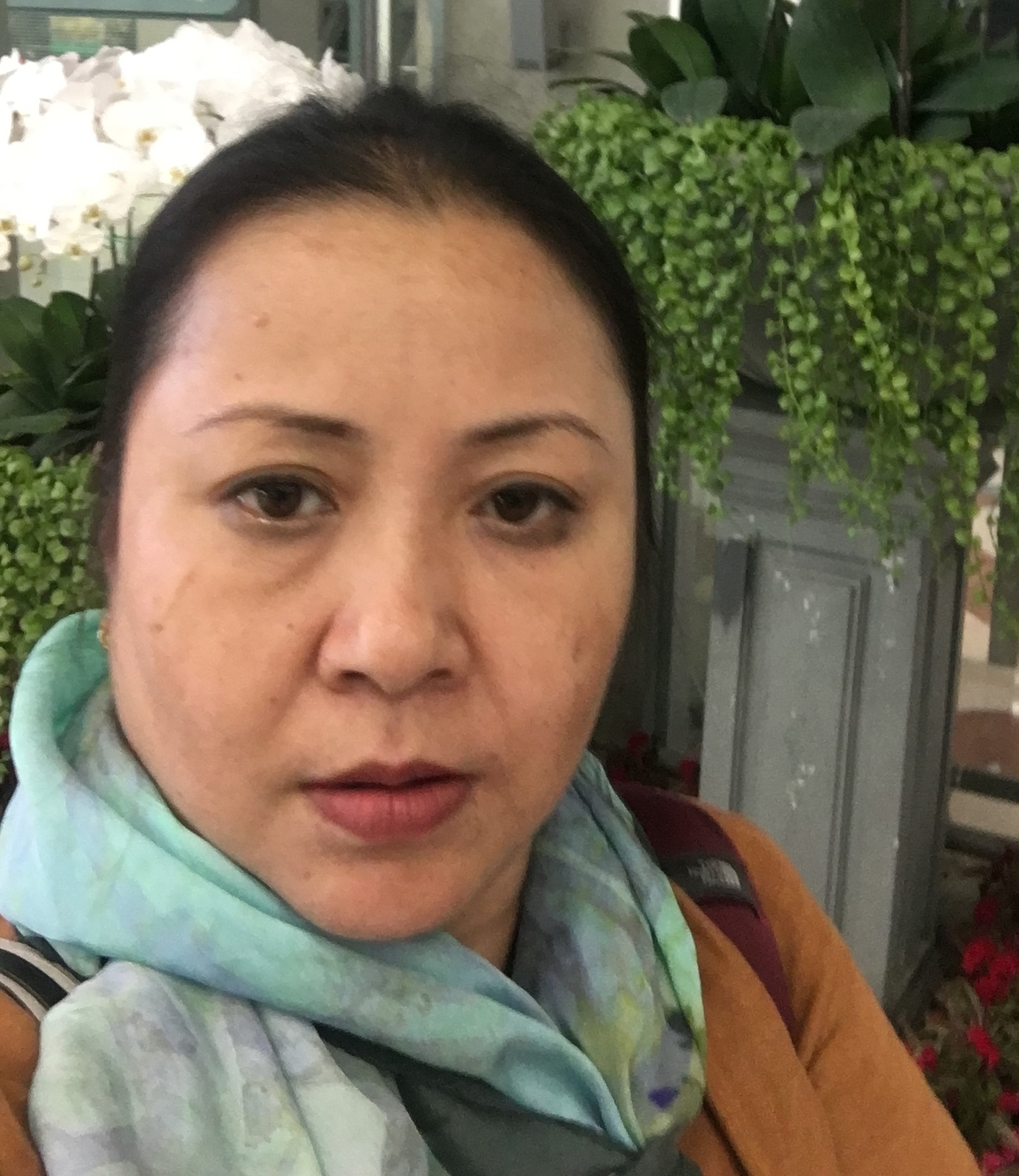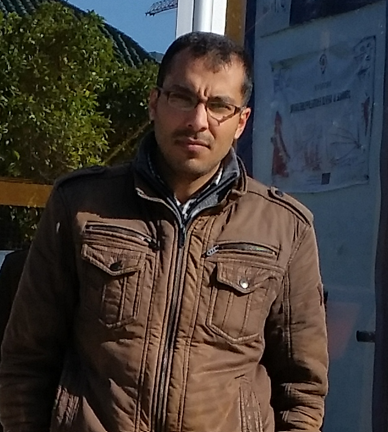Invited Speakers
Prof. Chitsan Lin
Department of Marine Environmental Engineering, National Kaohsiung University of Science and TechnologySpeech Title: Green and sustainable remediation- an innovative bioremediation of PCDD/F contaminated field soil
Abstract: Green and sustainable remediation (GSR) is a newly promoted low carbon footprint remediation approach. In this study, an example of polychlorinated dibenzo-p-dioxins and dibenzofurans (PCDD/Fs) contaminated soil bioremediation is demonstrated. PCDD/Fs contaminated soil is a serious global issue. This study examined bioremediation techniques, food waste composting and mycoremediation, to degrade the PCDD/Fs in contaminated field soil. The soil was prescreened to obtain the soil particle size 0.105 – 0.250 mm (ca. 67% of the whole soil), which had a PCDD/F concentration of 14,000 ± 2400 ng I-TEQ kg-1. The contaminated soil was mixed with the food waste to prepare initial composting mixture and fermented for 42 days. For the mycoremediation, the soil was inoculated with Pleurotus pulmonarius and incubated for 72 days. The total PCDD/F concentration reduced to 1,916 ng I-TEQ kg-1 (removal efficiency of 75%). The microbial community was identified by next-generation sequencing (NGS), and results show numerous bacterial species that supported PCDD/F degradation during the composting. In the another mycoremediation experiment, the overall PCDD/F removal was 96%, and the residual concentration (276 ng I-TEQ kg-1) was below the regulatory control limit (1000 ng I-TEQ kg-1). The food waste composting and mycoremediation using P. pulmonarius can successfully remediate the PCDD/F-contaminated field soil. Direct treatment of the non-sterilized soil also makes our bioremediation techniques feasible to develop into actual field application.
Prof. Yao-Tung Lin
Lifetime Distinguished ProfessorDepartment of Soil and Environmental Sciences, National Chung Hsing University
Speech Title: Catalyzing Indoor Pathogen Control: Effective Photocatalyst on PMMA Substrate for Visible Light Disinfection
Abstract: Photocatalysis represents a remarkably efficient technique for breaking down organic pollutants through the utilization of reactive oxygen species (ROS). This investigation details the creation of an ecologically favorable photocatalyst using a dip-coating method. The catalyst is grounded in nitrogen-doped TiO2 (N-TiO2) and adhered to polymethyl methacrylate (PMMA). Notably, the PMMA coated with 5 g/L N-TiO2 achieved an impressive transmittance rate of 92%, surpassing prior studies involving the sprinkling technique. This newly developed photocatalyst has proven to be exceptionally effective in eradicating bacterial pathogens when exposed to visible light. With a visible light intensity of 0.54 mW/m2 and the PMMA coated with 5 g/L N-TiO2, complete inactivation (5-log-inactivation) of both Staphylococcus aureus (S. aureus) and Escherichia coli (E. coli) was attained within a day. This outcome underscores the efficacy of the photocatalyst in purging indoor environments. The N-TiO2-coated PMMA demonstrated heightened disinfection capabilities compared to the N-TiO2 suspension. This enhancement can be attributed to the immobilization of the photocatalyst on PMMA, which facilitated improved ROS production and better interaction between the photocatalyst and bacterial cells. Within the span of 24 hours, disinfection efficiencies were found to be contingent on the dosage of the photocatalyst coating solution and the intensity of visible light. These findings were analyzed using the adapted Hom model. Furthermore, reusability trials exhibited that the N-TiO2-coated PMMA sustained a 99.99% disinfection rate against S. aureus even after undergoing five cycles of photo-oxidation. This underscores its potential for consistent and sustainable disinfection applications. The physical attributes of deactivated bacterial cells were scrutinized using atomic force microscopy, which revealed alterations in bacterial height and surface roughness due to photo-oxidation. To conclude, the dip-coating technique yielded an environmentally friendly N-TiO2-coated PMMA that serves as a cost-effective and potent disinfectant matrix for controlling indoor pathogens under visible light conditions. The newly devised photocatalyst exhibits promising potential for diverse indoor disinfection applications, spanning environments such as hospitals, schools, and other communal spaces.
Prof. Meng-Wei Wan
Department of Environmental Engineering and Science, Chia-Nan University of Pharmacy and ScienceSpeech Title: Synthesis of Polyoxometallic Acids Combined with Phase Transfer Catalysts for Optimizing the Oxidation of Organosulfur Compounds under Sonication
Abstract: In this study, a transition metal catalyst (phosphotungstic acid) and different quaternary ammonium salts, namely: tetraoctylammonium bromide, tetrabutylammonium bromide, tetramethylammonium chloride and tetrabutylammonium chloride, were synthesized. The composite catalyst was prepared, and conducted an ultrasonic-assisted oxidation test for the index organic sulfur compounds (Benzothiophene, BT and Dibenzothiophene, DBT). The premilitary results indicated that the composite catalyst synthesized by phosphotungstic acid/tetrabutylammonium chloride illustrated the best oxidation efficiency.
The optimization analysis, designed under the experimental factors and levels, were arranged for 27 groups, where the actual experimental results were implemented and confirmed. The experiments of DBT and BT oxidation were confirmed under the conditions at: the sulfur concentration is 300 ppm, the dosage of the composite catalyst is 0.2 g, the reaction time is 30 minutes, and the volume ratio of hydrogen peroxide to simulated oil (W/O) is 1:1, the best DBT oxidation efficiency is 97.1%. Under the operating conditions of 0.2 g, 30 min reaction time and 0.5:1 of W/O ratio, the best BT oxidation efficiency could reach 95.5%. These results indicated that the phosphotungstic acid/tetrabutylammonium chloride composite catalyst synthesized in this study has the ability to completely oxidize organic sulfides. Moreover, the response surface methodology verified that the reaction time illustrates the greatest impact on the overall oxidation efficiency, and the dosing amount of the composite catalyst is the next factor, however, the increase of the sulfur concentration slightly decreases the oxidation efficiency, while the increase of the W/O ratio greatly reduces the oxidation efficiency. The reuse experiments of recycled catalysts indicated that the effect of the composite catalyst didn’t decrease after recycling 4 times, but the current recovery rate is only reached 70%.
Prof. Zhimin Qiang
Professor/Director,State Key Laboratory of Environmental Aquatic Chemistry, Research Center for Eco-Environmental Sciences, Chinese Academy of Sciences, China
Speech Title: Facilitated Prediction of Micropollutant Degradation by UV-AOPs in Various Waters via Combining Model Simulation with Portable Measurement
Abstract: Micropollutants have attracted increasing attention because of their potential threat to aquatic ecosystem and public health. Ultraviolet-based advanced oxidation processes (UV-AOPs) have been regarded as effective approaches for micropollutant degradation. However, micropollutant degradation in water by UV-AOPs depends strongly on water matrix. This study developed a facilitated prediction method for photon fluence-based rate constant of micropollutant degradation (k′p,MP) in various UV-AOPs by combining model simulation with portable measurement. The simulation models consisted of photochemical, quantitative structure-activity relationship, and radical concentration steady-state approximation models. The portable measurement quantified the scavenging capacities for principal reactive radicals (RRSCs) involved in UV-AOPs (HO•, SO4• and Cl•) by using a mini-fluidic photoreaction system (MFPS). The RRSCs were determined in eight test waters, which exhibited a good correlation with water matrices and reaction selectivities of reactive radicals. Then by taking sulfamethazine, caffeine, and carbamazepine as model micropollutants, their k′p,MP values in various UV-AOPs were predicted and further verified experimentally. This study proposed a novel method for facilitated prediction of k′p,MP in various UV-AOPs in real waters. The developed method doesn’t require advanced analytical instruments, but can be accomplished in field by a small-size photoreactor (MFPS) and a portable spectrophotometer. This method could instruct proper process selection and optimization of UV-AOPs, as well as provide a feasible approach for monitoring water matrix change and enabling corresponding on-line adjustment of operating parameters, which is essential for increasing efficiency and cost-effectiveness of water treatment.
Assoc. Prof. Tsing-Hai Wang
Department of Chemical Engineering and Materials Science, Yuan Ze UniversitySpeech Title: Involved Surface Chemistry for Green Waste Reutilization: Examples of Fluoride Recovery and Functionalization of Waste Beer Dreg
Abstract: The promotion of waste reutilization through environmentally friendly methods aligns with the principles of the circular economy. Embracing this, a deep understanding of surface chemistry becomes paramount in designing the optimal path for effective reutilization. In our study, we demonstrate our endeavours in repurposing waste beer dregs to degrade dye-contaminated wastewater and to recover fluoride using specialized cellulose filter papers. In the case of waste beer dreg reutilization, the initial step involved the conversion of waste beer dregs into biochar via high-temperature pyrolysis. To enhance the degradation of real dye-polluted wastewater, we introduced iron oxides onto the biochar surface through a hydrothermal reaction. While the degradation efficiency showed gradual decline across different operational batches, the catalysts exhibited remarkable rejuvenation potential through a straightforward carbothermal reaction. This innovative regeneration process empowered waste beer dregs to function as Fenton's reagent for effective dye wastewater degradation.
In a parallel effort, we functionalized cellulose filter papers using esterification. The introduction of associated carboxyl groups enabled the selective and efficient adsorption of calcium and magnesium cations from seawater. Subsequent reactions between the adsorbed calcium and magnesium and the fluoride ions facilitated the recovery of fluoride from wastewater. Notably, the porous nature of cellulose paper proved instrumental in retaining calcium and magnesium fluoride colloids, thus facilitating their separation from the wastewater. The cellulose paper containing calcium/magnesium fluorite emerged as a valuable green carbon source, finding utility in steel milling and cement production. This multifaceted approach not only highlights the potential economic gains but also presents the viability of effectively functionalizing waste for practical reutilization endeavors.
Dr. Yousry Mattar
Water Deputy Ministry, Ministry of Environment, Water and Agriculture, Kingdom of Saudi ArabiaSpeech Title: Hydrometeorological Study on the Impact of the Weather State “Rahw” on the Water Resources in Southwestern Regions, Kingdom of Saudi Arabia
Abstract: In the arid regions, some heavy rainstorms and weather states may be happened annually and continued for few to many days resulting in large, or extreme flood events. The western and southwestern regions in the Kingdom of Saudi Arabia (KSA); Al Madinah, Makkah, Al Bahah, Asir, Jazan, and Najran, as well as some parts of the neighboring countries such as Oman, United Arab Emirates, and Yemen have been exposed to a summer weather state which is locally named by Saudi Committee of Nomenclature of Distinguished Weather States as “Rahw”. This weather state lasted for 18 d started from 24 July 2020 to 10 August 2020 and resulted in moderate to heavy daily rains. The present study deals with the hydrometeorological impacts of the weather state “Rahw” depending upon the statistical analyses and ARC GIS spatial distribution of 193 rainfall and weather stations, as well as daily records of water levels in 165 constructed and under construction dams’ reservoirs. The total geographic areas of Al Madinah, Makkah, Al Bahah, Asir, Jazan, and Najran Regions attain 522,000 km2, representing 26.6% of the total area of KSA. According to the present study, the total geographic areas that have received rainfall precipitation in these regions during “Rahw” are estimated as 212,672 km2 and the average total rainfall depth over these regions only is estimated as 69.59 mm, representing 45.8% of the total annual average rainfall depth over these regions. Also, the average total rainfall depth over all KSA during “Rahw” is estimated as 32.56 mm, representing 30.1% of the total annual average rainfall depth over all KSA regions. On the other hand, the calculated average precipitation depth in July 2020 only, attains 32.9 mm and 9.4 rainy days, compared to 20 mm and 5 rainy days of the same month during the interval from 2010 to 2019. Also, the present study concluded that the average precipitation depth in August 2020 is estimated as 27.5 mm and 9.2 rainy days, compared to 27 mm rainfall depth and 7 d rainy during August in interval from 2010–2019. The total rainfall volume received during “Rahw” weather state estimated as 10,894 million m3 representing 20.2% of the total annual average rainfall volume in these regions, and 7.2% of the total annual average rainfall volume over all KSA regions. Also, the total rainfall volume received during “Rahw” weather state resulted to 1,308 million m3 direct surface runoff, among of these 352 million m3 were retained behind 147 constructed dams, and 18 million m3 behind 8 under construction dams, and the remaining 938 million m3 is recharged in wadi deposits aquifers in those areas. Also, 201.6 million m3 of water was released from dams’ gates to meet the demands of farmers on the down-stream of dams during the rainy state, in addition 8.3 million m3 was supplied for drinking waters and treatment plants. The net increase in the water volume behind the dams as a result of “Rahw” weather stations estimated as 142 million m3. The present study recommends developing and update the operational plans of dams in western and southwestern regions to maximize the benefits from the surface runoff and enhance the water resources during the occurrence of such weather states.
Prof. Mengkai Li
State Key Laboratory of Environmental Aquatic Chemistry, Research Center for Eco-Environmental Sciences, Chinese Academy of Sciences, ChinaSpeech Title: Optical Field Measurement of UV Light-Emitting Diode Photoreactor by Using Micro-Fluorescent Silica Detector
Abstract: Ultraviolet (UV) light-emitting diode (UV-LED) has been regarded as an emerging UV light source for disinfection and photochemical oxidation in water and wastewater treatment. The performance of a UV reactor depends on the UV fluence (or UV dose). The combination of a spatial photon fluence rate (PFR) distribution (i.e., Optical field) and computational fluid dynamics is necessary to obtain the UV fluence of a UV reactor, as well as the configuration of a UV reactor for optimal efficiency (e.g., increase the reflection of the reactor inner-wall). Therefore, an accurate quantification of the spatial PFR distribution is significant. However, this work has not been well studied for UV-LED reactor.
As compared to the conventional low-pressure (LP) mercury lamp, UV-LED has the merits of small size and various output wavelengths, which allow for more flexible light source layout and wavelength selection in the design of a reactor. A micro-fluorescent silica detector (MFSD, 0.7 mm3 volume) can capture photons uniformly from nearly all directions at a test point. This MFSD, fixed on a precise two-dimensional guideway, could directly measure the PFR distributions accurately in various types of UV reactors, such as LP reactor, medium-pressure UV lamp reactor, reactor with different inner-wall materials, and reactors with multiple lamps, exhibiting high stability, fast response, water resistance, and small size. This detector has great potential to be applied for the determination of optical field for UV-LED reactors.
So we herein report the use of this MFSD to reveal the optical fields of commercial UV-LED reactors. At first, the PFR distribution of a single UV-LED chip was measured in the air, which not only validated the PFR distribution model of UV-LED, but also measured the output power of a single UV-LED chip. Then, the PFR distribution of a UV-LED reactor filled with water with various UV transmittances were measured. The impact of water UVT and inner wall reflection were examined. This work provides significant results for the optimal design and high-efficacy operation of a UV reactor.
Prof. Kuo Wei Lan
Department of Film and TV, I-Shou UniversitySpeech Title: Re-mapping Environmental Protection and Literacy in Taiwan through an Environmental Documentary, Beyond Beauty: Taiwan from Above (2013)
Abstract: Since technology accelerated the emergence of industrial societies during the 18th to 19th-century industrialization, the world’s modern environmental problems began with or were aggravated by the Industrial Revolution. In the late 20th century, environmental issues have become global in scale, and in the 21st century, the significant impact of climate change raises an increasing global awareness. Accordingly, Taiwan began to industrialize in the 1950s and ranks as the 21st world economy in 2022. The 1970s already exacerbated the environmental damages caused by the high industrialization. However, it was not until the 1980s when a series of pollution incidents awakened Taiwanese society as it experienced high economic growth, and the Taiwanese government chose to ignore the importance of environmental protection and sustainability. The government started to pay attention to balancing economy and the environment as the Environment Protection Administration was established in 1987. Taiwan passed the Environmental Education Act in 2010, and officially came into effect on June 5, 2011. Meanwhile, many civil organizations and environmental groups formed in the 1980s which helped spawn the modern environmental movement. Ecological movements have developed to this day and have become a vital force affecting Taiwanese society on environmental issues. In particular, the evolution of documentaries on environmental issues in Taiwan is closely related to the development of Taiwan’s environmental movement and the change in people’s environmental awareness. Mass media are the primary source of information and knowledge on environmental issues for laypeople other than scholars and scientists. Therefore, this paper will re-map the evolution of documentaries on environmental issues in Taiwan and then use a theatrical release of the documentary Beyond Beauty: Taiwan from Above (2013), the highest budget and grossing documentary ever made in Taiwan, to explore how this documentary problematizes environmental issues by combining the narrative of trauma and conflict with the visual aesthetics to raise the audience’s ecological awareness.
Dr. Rajkumari Sunita Devi
State Level Nodal Agency for Watershed Management, IndiaSpeech Title: Towards Effective Geospatial Techniques for Watershed Management - A Case Study from Manipur, India
Abstract: For proper management of watershed and to give the best intervention, reliable and up-to date information are required on various attributes like morphology of the watershed, accurate delineation, soil and their characteristics, land use/ land cover, slope aspect, hydrogeomorphology, drainage pattern and order. Use of geospatial techniques forms an integral part of such studies and provide ways for rapid collection of field data and prompt data processing. In this study, a locale-specific watershed development plan was generated for the case study area of Churachandpur District (including Pherzawl) of Manipur, India using remote sensing and GIS techniques. Indian Remote Sensing Satellite (IRS-1C), Linear Imaging Self Scanner (LISS-III) satellite data along with other legacy data, existing maps and field observation data have been utilized for generating a land use/land cover map and to extract information on morphological parameters. Thematic maps like hydrogeomorphology, geology, drainage and soil maps, which are an essential pre-requisite for watershed development, are generated for the study area. Spatial analysis was done for generation of flow accumulation, flow direction, slope aspect, etc. The study makes an attempt to explore on the significant land use changes especially in open forest, open scrub, cultivated lands, water bodies and wastelands of three years with an interval of five years, 2005-06, 2010-11 and 2015-16. Out of the total treatable area of 1696.44 sq.km, 81.97 sq.km requires immediate intervention for water conservation plan. Total drainage length of the study area was found to be 872.80 Km occupying an area of 32.66 sq.km which is 0.72% TGA.
Dr. Soufiane Haddout
Department of Physics, Faculty of Science, Ibn Tofail University, MoroccoSpeech Title: A 2-D Numerical Modelling of Estuaries Meandering
Abstract: Meandering estuaries require some level of hydrodynamic and morphologic analysis. The details of the hydraulic and morphologic features through meander evolution in estuary can be simulated through a numerical model. A 2-D model was adopted to investigate the hydraulic and morphologic changes through meander’s evolution. A meandering Sebou estuary in Morocco was studied and considered for morphological modeling by 2-D numerical analysis. The K-ɛ turbulent model and secondary current were considered for modeling complex flow pattern. The model takes into account both high and low tide conditions with different simulation scenarios under different river discharges. From the results, it was found that velocity is higher in the deeper part of the estuary, especially in the middle estuary section. Also, most of time, flow is sub-critical along the estuary. This study is significant for monitoring siltation process to keep the estuary navigable.

